Teacher Reflection: Not all days are like this. These days make the not-so-nice days worth it.
| In this post, I share: Clever Teacher Moves, If I Were a Classroom Teacher... , and a Gratitude Attitude Alert! I speak of Curriculum Connections, as well you will find references to a Supply Teacher Bag O' Tricks, some Teacher Reflections,and a Bonus Clever Supply Teacher Move... Grade 1/2 - Drama and Dance... Clever Teacher Move #1: Spontaneous Dance I found myself looking at a bunch of eager and ready kids in front of me, and in my hands, a couple of drama game books with pages marked with post-it notes... instead of reading through these resources, while the kids started poking and bugging each other, I decided that I needed a more immediate plan: we needed to move; we needed to dance! I thought I'd use... Clever Teacher Move #2: Playlists at the Ready Apple Music playlists downloaded to my iPhone that I can easily plug into most playing devices... with songs to get them moving: Mini Pop Kids and Kidz Bop are great for kids who love the popular songs, and ideal for teachers who worry about inappropriate content in those songs. These groups create kid-friendly versions of popular music. Win-win:) I also have a couple traditional movement songs in different musical styles. |
Clever Teacher Move #3: Checking Out the Dynamics of Your Crew
For a bit of diagnostic assessment, I like to start with Freeze Dance. I direct the students to find a square on the floor, not next to any one else’s square. That is their square and in fact, I tell them they can even name their square, if they’d like. So one foot should always be in (or returning to, if jumping) your square. Then we are ready to begin.
The square on the floor defines each of the student’s personal space for this activity. You could even have a discussion about this if a class required it. I can quickly tell who has an understanding of spatial sense and the ability to move and return to their space. It is always evident who those students are that just don’t have this skill, and in my experience, usually students who don’t stick to their area; they just can’t, rather than they are not paying attention, or they don't want to. They usually do not have the inhibitory control/self-control and sense of personal space to be successful at this task. So, don’t worry about it; because most of the class are in their places leaving it much safer for the couple movers/runners to do their thing with less bumping into their friends. Sorted. Differentiation. Unique needs of a few students met whilst still meeting the needs of all students. Priceless.
Moving and stopping is very hard for some of our young learners. This skill requires listening skills, plus body control (inhibitory control, self control and spatial sense).
- Inhibitory control is the capacity to control our impulses and think before we act, or in the words of neuroscientist Adele Diamond, “to resist a strong inclination to do one thing and instead do what is most appropriate.” - See more at: http://childrenwithchallengingbehavior.com/tag/inhibitory-control/_
- Self-control is about being able to regulate yourself. Can you resist distractions? Get a handle on your own emotions? Inhibit your impulses? Delay gratification and plan ahead? - See more at: http://www.parentingscience.com/teaching-self-control.html#sthash.JNlLdNeY.dpuf
For the ol' Supply Teacher Bag O' Tricks, here are some games designed to give kids a self-regulation workout: (from: http://www.parentingscience.com/teaching-self-control.html)...
- The Freeze game. Kids dance when the music plays and freeze when it stops. Dance quickly for fast-tempo songs, slowly for slow-tempo songs. And then reverse the cues: Fast music = slow dancing. Slow music = fast dancing.
- Color-matching freeze. In this variant of the freeze game, kids don’t just stop dancing when the music stops. First, they find a colored mat and stand on it. Then, before they freeze, they perform a special dance step. There are several, differently-colored mats on the floor, and each color is linked with a different dance step.
- Conducting an orchestra. Kids play musical instruments (like maracas and bells) whenever an adult waves her baton, increasing their tempo when the baton moves quickly and reducing their tempo when the baton slows down. Then the opposite rules apply (e.g., kids play faster when the baton moves slowly).
- Drum beats. A teacher tells kids to respond to different drum cues with specific body movements. For example, kids might hop when they hear a fast drum beat and crawl when they hear a slow drum beat. After a time, kids are asked to reverse the cues.
Teacher Reflection: Physical age doesn't so much matter here, as much as past experiences. Some groups, on the whole will not have had many movement experiences, and may require extra work. If this is the case, stick to the self-regulation control dancing games.
We were ready to Just Dance! And dance we did... we did some Free Dance to some different styles of music: from classical to hip hop and popular songs.
In between songs, I questioned the students about what they were doing, referring to grade-level dance expectations from the curriculum, for example:
- How do you know how to dance/move? ("I move like this to slow music and like this to faster music." Me: "Class, how is Girl dancing?"... "bumpy, smooth, fast, slow"... Boy: "I did this because it was Hip Hop." - He showed some fancy foot work.)
- Teacher Reflection: Some shy or anxious kids get nervous when we use the word dance because they think they can't dance. Not true. If you can move than you can dance. And, you can call it moving, if that helps.
- How did you move to the classical version of 'Let it Go'? ("I move intensely to intense music and like this - showed me a choppy hand movement - to music that sounds bumpy.")
- I prompted: "So, would you all say that the music tells you how to move?" Class:"Yes! So, let's dance more!"
- One boy proclaimed: “I was born to dance…. though I didn’t know it until right now!” - Wow, powerful statement! This brings me to a Gratitude Attitude Alert! - I am pleased when I am able to provide meaningful and effective education, unrelated to pen-to-paper. Sometimes, the kids don't even realize that they are learning. A little play-based learning can go a long way!
- Teacher Reflection: the students may not have all of the vocabulary, so you may have to fill in some of the words for them.
I would use a 'Creative Movement' Word Wall to display words to help students talk about how they are moving, which likely would turn out to be an Arts word wall as the words are helpful across subjects.
- Have students stand around in a circle.
- Play music.
- One by one, students will go into the middle of the circle and do a movement while people around the circle imitate that movement.
- When the leader feels that are ready to move on, they will point to another student to come into the circle.
- Teacher Reflection: Provide an option to pass, with the added option to decide they are ready at a later time, indicated by raising a hand, or whatever, thereby maintaining a safe and positive classroom learning environment where every one feels comfortable.
- The new leader makes the next movement for the group to imitate.
Clever Teacher Move #4: State some safety rules.
Together, create a couple of rules to keep everyone safe. Some kids are super dancers but not everyone is safe to imitate their moves. For example, upright dance moves, no gymnastics, feel free to adapt the move to something you can do, etc.,...
Part of self-regulation is knowing when we are tired and need a rest. So, I designate a spot to do so. In this case, the students could sit atop the tables on their bottoms with their feet dangling down (the classroom teacher's approved table top sitting method). I stipulated that they must still be moving by keeping the beat somehow: clapping, snapping, rocking, patting lap, or with voice (woo woo, uh huh), etc.,...
- Most students were actively and exuberantly engaged and participating and the few that weren't were hovering near me, so I gathered them around me and we danced together.
- I've already talked about the self-regulation/self-control skills that dance helps to develop and then helps to consolidate these skills.
- DPA - The kids, and I, were sweaty! A super fun way to get in our 20+ minutes of daily physical activity, as dance is highly physical. (Government says we gotta move it!)
- Added bonus of channeling some of their seemingly boundless energy.
- Cross-curricular connections: The same concepts are found in music: Beat & Rhythm, for example.
This is acknowledged not only in our Ontario Curriculum Document and by science, but those who dance, just know these things to be true!
Our CURRICULUM says...
Dance Elements are: body, space, time, energy, and relationship
In the primary grades, students should be moving creatively every day. Students begin to use personal experience, imagination, and familiar movements to develop a movement vocabulary, to respond to prompts and express ideas, and to communicate their thoughts and feelings in various situations. Through a balance of free exploration and guided exploration, students develop awareness of their bodies and of the many different ways they can move. Through modelling and guided movement explorations, they expand their movement vocabulary to include some of the elements of dance. In particular, students begin to travel through pathways, use gesture to communicate feelings, and explore a range of levels, shapes, and locomotor and non-locomotor movements. Students also develop their ability to move and control their bodies in space and time and begin to create short dance pieces using the elements of dance.
From: http://www.edu.gov.on.ca/eng/curriculum/elementary/arts18b09curr.pdf
PHE CANADA gives Five Reasons to Teach Dance, for anyone still unconvinced:
As a teacher it is important to remember that everyone CAN dance! By using an approach that provides an opportunity for guided movement expression, all students can bring their unique abilities to create movement.
- Reason #1: It is part of the curriculum!
- Reason #2: Dance educates students.
- Reason #3: Dance educates the entire Self and provides an ideal vehicle for students to learn physically, intellectually, emotionally, and socially.
- Reason #4: Dance provides opportunities for cross-curricular and integrated learning.
- Reason #5: Dance education creates balance within the educational program.
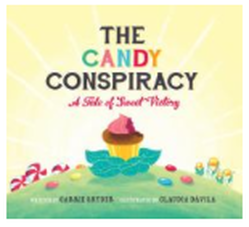
Last class at the end of the day... tired 6 and 7 year olds... meant to be learning about health and nutrition, but they weren't exactly into it. It's not that they were against it, but they were just really wiggly and tired and grumpy, and I just couldn't see peace lasting until home time.
Oh, Look What I Just Happen to have in my Supply Teacher Bag O' Tricks!... This VGB (very good book), which is a very versatile read-aloud that is good across MANY grades; has enjoyment factor + matches a plethora of curriculum expectations....
The Candy Conspiracy: A Tale of Sweet Victory, by Carrie Snyder (2015)
In Candyville, the Juicy Jelly Worm rules over a land where lollipop trees grow beside rivers of root beer and powdered sugar falls like snow. Every day, he devours his candy throne, jujube crown and cupcake castle. Day in and day out, the children of Candyville must make new ones -- never getting so much as a nibble of nougat for themselves. Finally, one child comes up with an idea to outsmart the self-centered tyrant. The children plant a secret garden, hoping the fruits of their labor, which include sugar snap peas, candy cane beets, sweet potatoes, and watermelon radishes, might appeal to the Juicy Jelly Worm just enough to spark the sweetest trade ever.
We just had a fairly quick read aloud (due to time) and these same wiggly kids managed to sit mostly still in their chairs for the entire story! VGB = Priceless. (Especially if you use your public library! I love my library; Hamilton Public Libraries Rock!)
If I were a classroom teacher...
I would do so much more with this story. For example, we could do some word work to expand the students' vocabulary and the story lends itself well to using the Prediction Literacy Strategy.

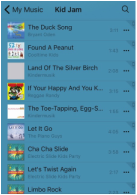
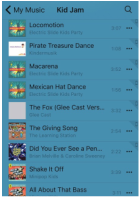

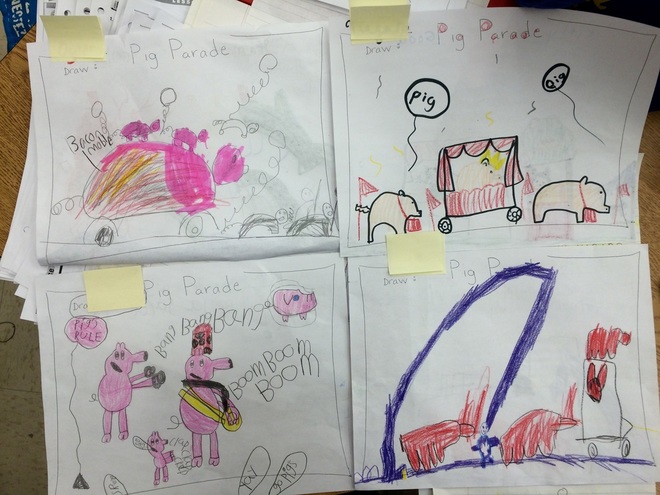
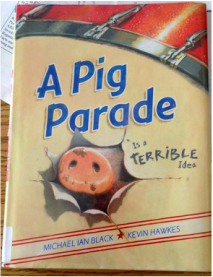
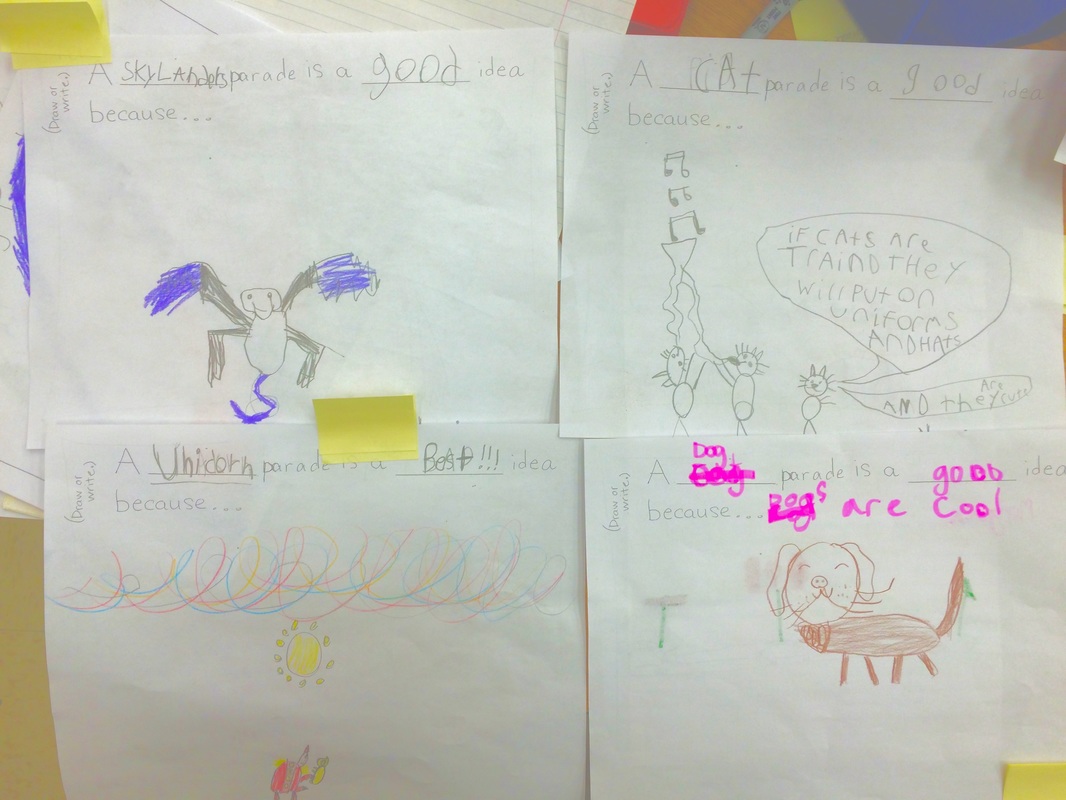
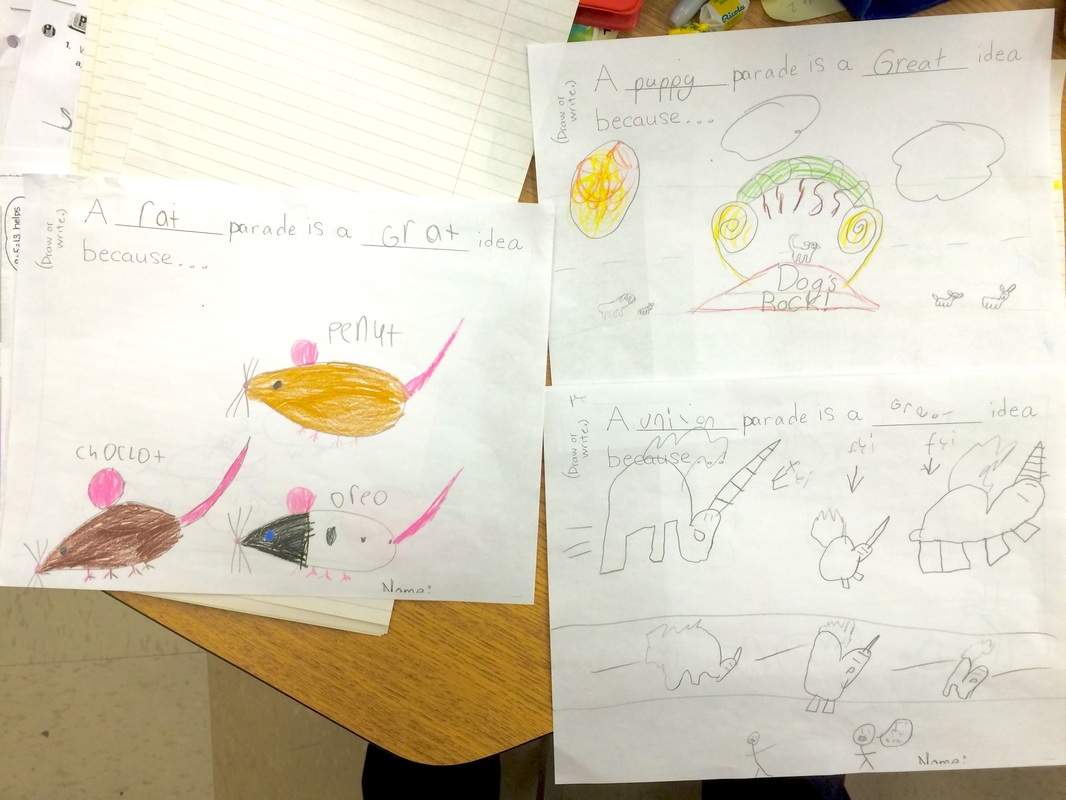
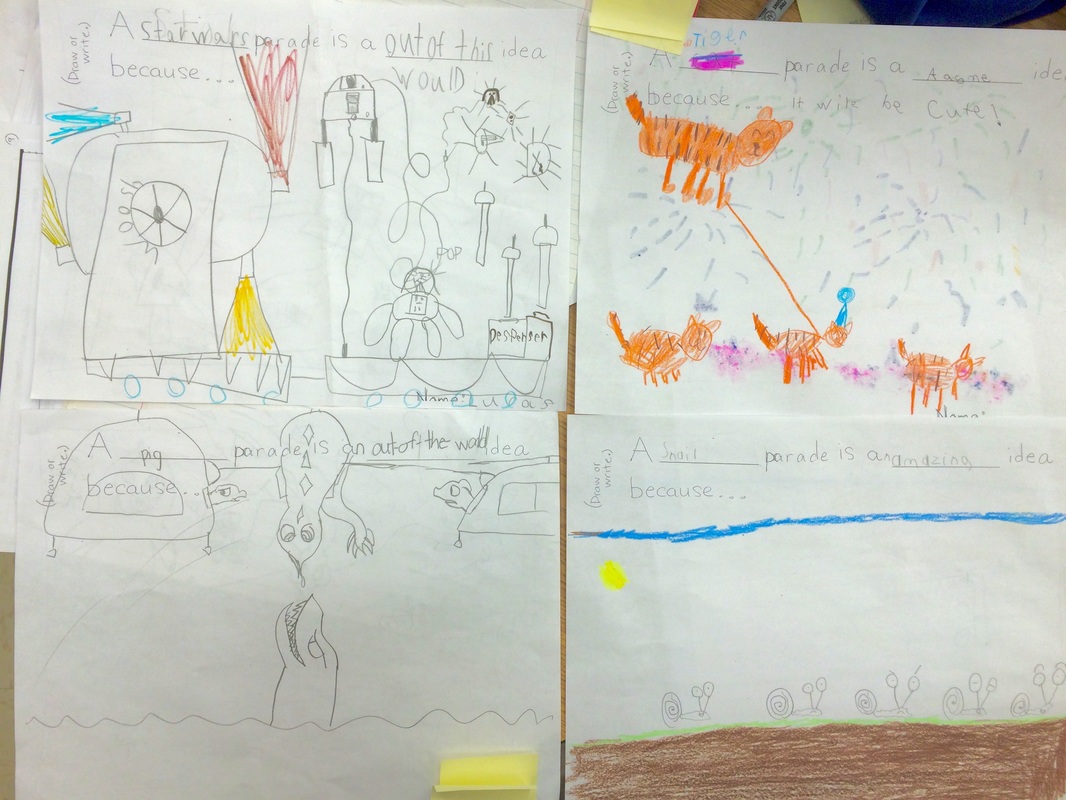
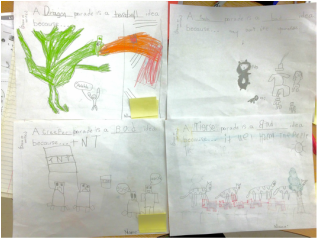
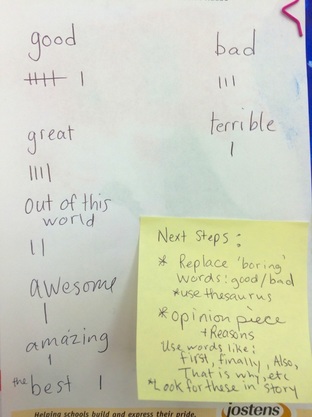
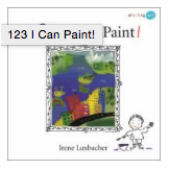
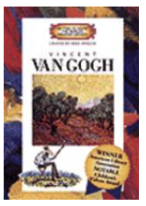
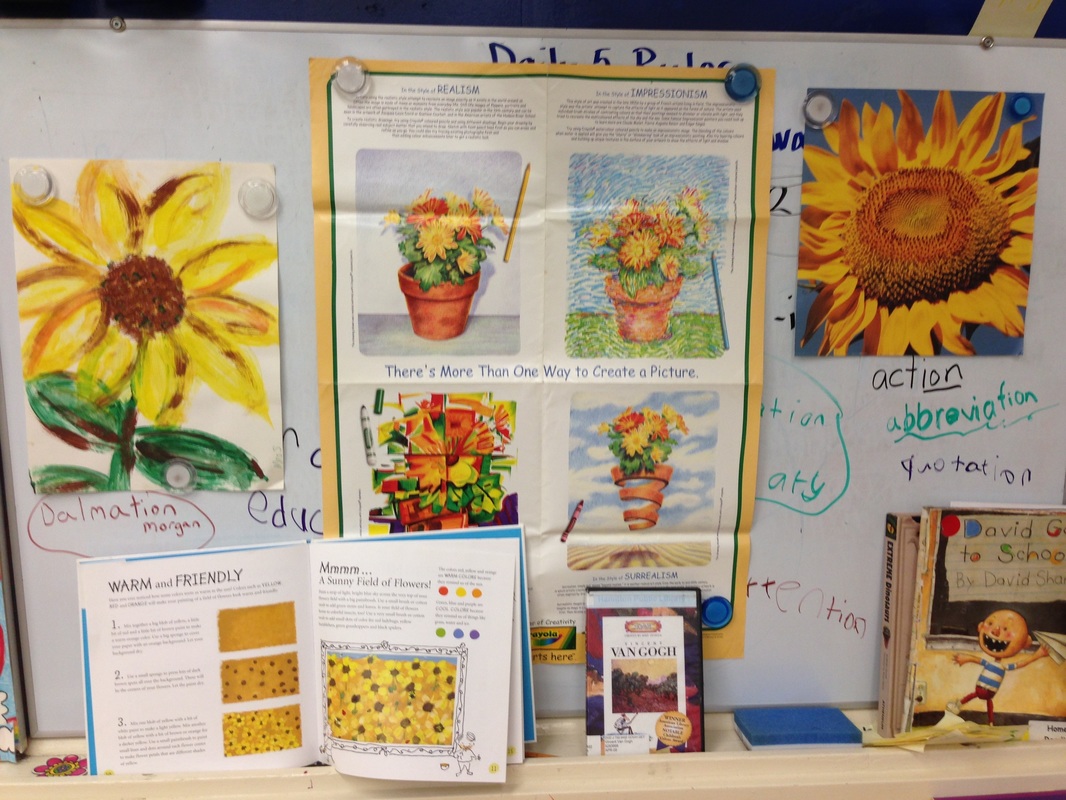
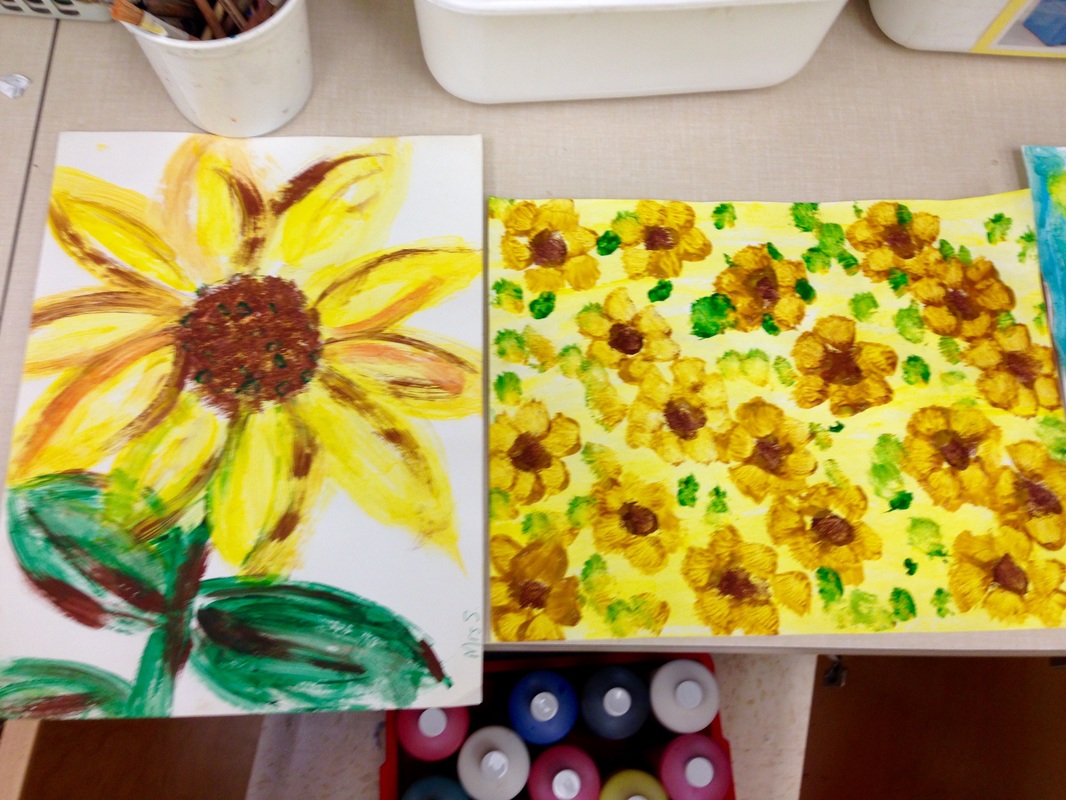
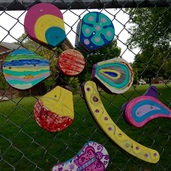
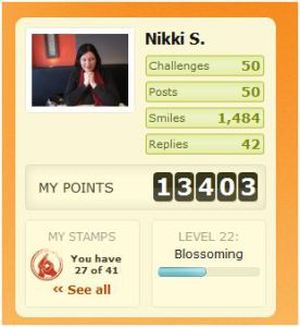

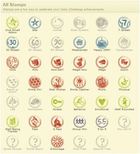


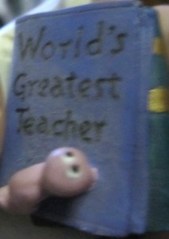
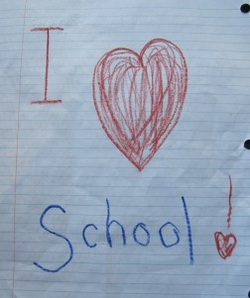
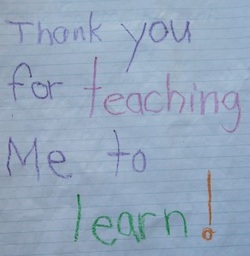
 RSS Feed
RSS Feed
